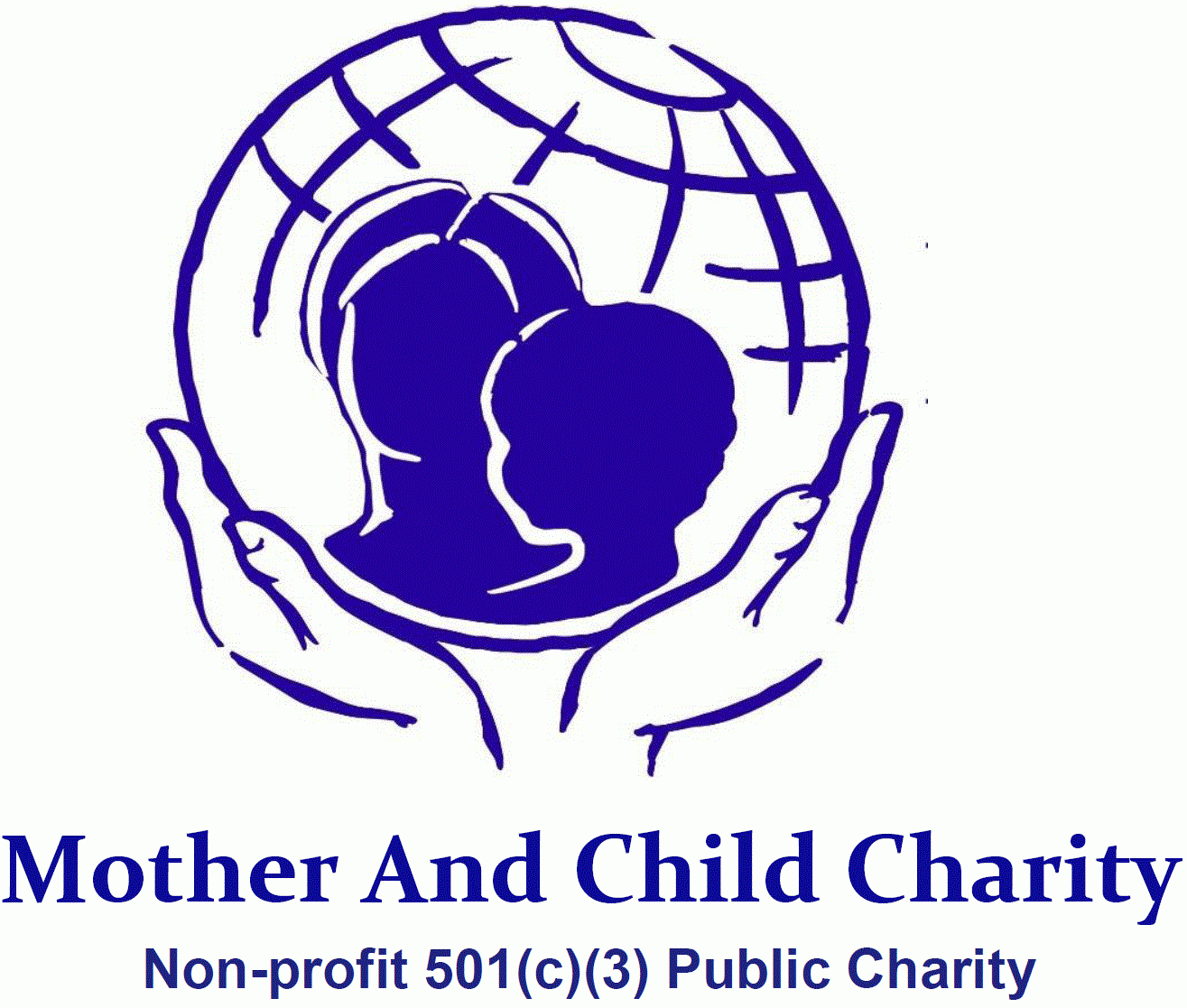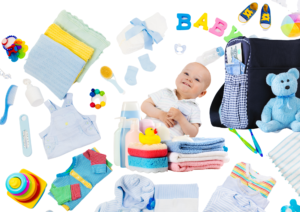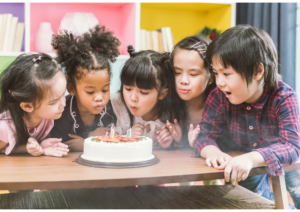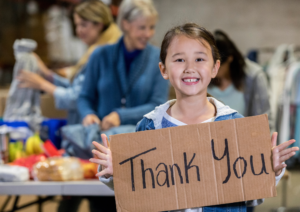Our services
for children
Presently, we are concentrating on several programs tailored for disadvantaged children, including Baby Welcome Bags, Child Comfort Bags, School Ready Bags, Party in a Box, and theme park visits. Our aim is to introduce more programs in the near future, and with your generous support, we can expedite the realization of our goals.
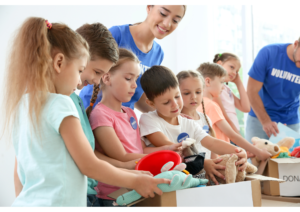
child comfort bag
Our child comfort bag is a wonderful way to provide essential items and comfort to a child going through a challenging or distressing situation.
This comprehensive child comfort bag is designed to address physical, emotional, and psychological needs, ensuring that children receive the care and support necessary for their well-being and comfort during challenging times. We ensure that the items are age-appropriate and safe for children. These comfort bags are donated to local shelters, foster care agencies, and hospitals.
Here’s a list of items we include in a child comfort bag:
- Stuffed Animal or Soft Toy (kids under 10): A cuddly stuffed animal or soft toy serves as a comforting companion, providing a sense of security and a source of emotional support.
- Toys such as Lego sets, puzzles, and age-appropriate entertainment items (kids over 10): These items cater to older children’s interests, stimulating their creativity and providing a source of enjoyment during their time of need.
- Blanket: A soft and warm blanket not only offers physical comfort but also a feeling of coziness and familiarity, helping a child feel more at ease.
- Soft Pillow: If space allows, a small, soft pillow enhances the comfort of rest or sleep.
- Coloring Book and Crayons (kids under 10): Coloring can be a therapeutic and creative outlet for children, promoting relaxation and distraction from stress or anxiety.
- Storybook: Including a beloved storybook provides a comforting and familiar source of entertainment and emotional connection.
- Snacks: Age-appropriate store purchased snacks like crackers, granola bars, or fruit snacks can alleviate hunger and provide a sense of normalcy and comfort.
- Juice Box or Water Bottle: Proper hydration is essential for well-being, and including a juice box or a reusable water bottle ensures the child has access to fluids.
- Puzzle or Game: Small puzzles or a deck of cards can be engaging and help pass the time, promoting cognitive stimulation and social interaction.
- Toiletries: Depending on the child’s age, toothbrush, toothpaste, soap, and shampoo promote personal hygiene and self-care.
- Tissues: Tissues or wet wipes for personal hygiene.
- Socks: Cozy socks keep feet warm and comfortable, addressing one’s physical needs for comfort and warmth.
- Glow-in-the-Dark Stars: These can be affixed to a room’s ceiling or walls, offering a soothing and familiar environment for sleeping.
- Small First Aid Kit: Basic first aid supplies like band-aids and antiseptic wipes ensure readiness for minor injuries.
- Note of Encouragement: A handwritten note with words of encouragement and support provides emotional comfort and reassurance.
- List of Emergency Contacts: Including a list of important phone numbers, such as parents or guardians, provides essential information in case of need.
- Small Backpack or Tote Bag: A bag to hold all the items.
baby welcome bag
Our baby welcome bag involves assembling a collection of essential items to provide care and support to new parents and their newborns. Including a variety of items in the baby welcome bag helps new parents feel supported and prepared for their journey into parenthood. It provides essential baby care items while also offering a warm welcome to the newest member of the family.
Here’s a list of items to include in a baby welcome bag:
- Diapers: A supply of disposable diapers.
- Baby Wipes: Gentle, fragrance-free wipes for diaper changes and cleaning.
- Onesies: A few sets of newborn onesies or baby clothing in various sizes.
- Blankets: Soft receiving blankets or swaddle blankets for warmth and comfort.
- Baby Bibs: Bibs to help keep the baby clean during feeding.
- Baby Toiletries: Baby shampoo, soap, and lotion suitable for sensitive skin.
- Baby Powder: Talc-free baby powder for diaper rash prevention.
- Baby Bottles and Formula (if needed): Bottles and infant formula for feeding.
- Pacifiers: A couple of pacifiers for soothing the baby.
- Baby Washcloths: Gentle washcloths for bath time.
- Baby Socks and Booties: Warm socks or booties to keep the baby’s feet cozy.
- Baby Towels: Soft, hooded baby towels for bath time.
- Baby Brush and Comb: Gentle grooming tools for the baby’s hair.
- Nursing Pads (for breastfeeding moms): Disposable or washable nursing pads.
- Infant First Aid Kit: Basic baby first aid items like a thermometer, baby-safe nail clippers, and saline nasal drops.
- Baby Toys or Rattles: Simple toys or rattles to engage the baby.
- Baby Books: Board books for early reading and bonding with the baby.
- Reusable Tote Bag: Pack all these items in a reusable tote bag, which can be handy for carrying baby essentials.
- Congratulations Card: A heartfelt card or note to welcome the new baby and express support for the parents.
- Parenting Resources: Parenting guides or pamphlets with helpful tips for new parents.
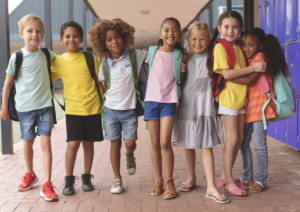
school ready bag
A school-ready bag is designed to comprehensively prepare students for the academic year, fostering enthusiasm for learning and providing them with the tools and resources necessary for success in their educational journey.
Here are more detailed descriptions of the items typically included in our school-ready bag:
- Backpack: A durable, appropriately sized backpack is chosen to comfortably hold all school supplies and materials, with adjustable straps for a good fit.
- School Supplies: These essential supplies include notebooks for notetaking and assignments, pens and pencils for writing, erasers for correcting mistakes, rulers for measuring, crayons or colored pencils for art projects, glue sticks for crafts, safety scissors for cutting, pencil sharpeners for maintaining writing instruments, highlighters for important information, and markers for various tasks.
- Folders: Pocket folders with different colors or designs help students keep assignments and papers organized by subject or class.
- Calculators: Depending on the child’s grade level and curriculum, a basic calculator may be required for math and science classes.
- Water Bottle: A reusable water bottle helps children stay hydrated throughout the school day, supporting their concentration and well-being.
- Art Supplies: Creative items like construction paper, craft scissors, and glue provide opportunities for artistic expression and class projects.
- Headphones: If computer-based learning or multimedia assignments are part of the curriculum, comfortable headphones with adjustable volume may be needed.
- Personal Hygiene Kit: This kit contains tissues for runny noses, hand sanitizer for cleanliness, and a spare mask if required for safety.
- Study Resources: Age-appropriate study aids or flashcards can assist students in reviewing and reinforcing lessons.
- School Uniform or Clothing Vouchers (if applicable): If the school has a uniform policy, vouchers or assistance with obtaining uniforms may be provided to ensure compliance.
- Calendar or Planner: Older students can benefit from a calendar or planner to help them stay organized, manage assignments, and track important dates.
- Bookmarks: Fun and motivational bookmarks encourage reading, promoting literacy and a love for books.
- Educational Books: Age-appropriate books provide opportunities for reading, exploration, and continued learning outside of the classroom.
- Reusable Tote Bag: All these items are thoughtfully packed in a reusable tote bag, promoting eco-friendliness and providing an additional storage option for school materials or personal use.
- School Identification: If applicable, a school ID or student card helps students access school facilities and resources.
- Emergency Contact Information: A card with emergency contact details ensures the child’s safety and quick access to important information in case of emergencies.
- Motivational Note: An encouraging note or card fosters a positive mindset and motivates children to excel in their studies.
- Parental Resources: Information on local educational resources, tutoring services, or community programs empowers parents to actively support their child’s education.
party in a box
A Party in a Box for is a thoughtful and compassionate package designed to bring joy and celebration to a child facing challenging circumstances. It contains a selection of items that allow the child to experience the fun and excitement of a party, regardless of their financial situation. Aims to brighten their day and make them feel special on a special occasion. It provides an opportunity for the child to have a joyful celebration, fostering positivity and happiness despite their challenging circumstances
Here’s a list of items we include in a child comfort bag:
- Decorations: Balloons, streamers, banners, and confetti to create a festive atmosphere.
- Tableware: Plates, cups, napkins, plastic utensils, and a tablecloth for easy dining and cleanup.
- Party Hats and Accessories: Fun hats, noisemakers, and costume accessories for guests to enjoy.
- Party Favors: Small toys, stickers, temporary tattoos, candy, and confetti poppers for guests to take home.
- Cake or Cupcake Mix: Ingredients for baking a celebratory cake or cupcakes, along with candles for decoration.
- Beverages: Non-alcoholic drinks suitable for all ages, such as sparkling juice.
- Snacks: A selection of snacks like chips, popcorn, or finger foods to keep guests satisfied.
- Party Games and Activities: Cards, small board games, puzzles, or craft kits to entertain guests.
- Music Playlist: A pre-made playlist or music suggestions to set the party mood.
- Invitations: Pre-made invitations or blank cards with envelopes to invite guests.
- Instructions or Party Ideas: A guide with game ideas, decoration suggestions, and setup instructions.
- Camera or Disposable Cameras: To capture memorable moments during the celebration.
- Thank-You Notes: Blank thank-you cards for expressing gratitude to guests

Theme park visit
A Theme Park Visit when passes are donated is a wonderful initiative that provides children and families, who might not have had the opportunity otherwise, with a memorable day at a theme park. It is a meticulously planned and heartwarming endeavor that aims to provide deserving families with a day of happiness and cherished memories. It exemplifies the ability of compassionate individuals and organizations to bring immense joy to those facing adversity. It is a heartwarming gesture that brings happiness and a sense of normalcy to families who may be dealing with difficult circumstances. It showcases the power of kindness and community to brighten the lives of others.
Here’s a more detailed breakdown of how a “Theme Park Visit When Passes Are Donated” typically works:
1. Donated Passes:
- Theme park passes are generously donated by individuals, charitable organizations, corporations, or directly by the theme park itself.
- Donors may contribute single-day passes, season passes, or special access tickets, depending on availability.
2. Recipient Selection:
- Recipients are carefully selected through a collaborative effort involving social service organizations, schools, or hospitals.
- Criteria for selection often prioritize families facing financial hardship, children with serious illnesses, disabilities, or other exceptional circumstances.
- Privacy and confidentiality are respected during the selection process.
3. Scheduling and Preparation:
- Once recipients are chosen, the visit is meticulously planned and scheduled to accommodate the needs and preferences of the families.
- Organizers work closely with theme park staff to coordinate logistics.
4. Information and Guidelines:
- Families receive comprehensive information about the theme park visit, including:
- Park address and contact details.
- Operating hours and dates of the visit.
- Park map, highlighting attractions and amenities.
- Safety guidelines, rules, and recommendations for a smooth experience.
5. Travel Arrangements:
- If recipients require transportation to and from the theme park, arrangements are made, which may include buses, vans, or other suitable modes of transportation.
6. Packing Essentials:
- Families are provided with a checklist of essential items to bring, such as sunscreen, hats, comfortable clothing, and any necessary medications.
- Guidance on what not to bring (e.g., prohibited items) is also provided.
7. Day of the Visit:
- Families arrive at the theme park on the scheduled day, where they are greeted by volunteers or organizers.
- An initial welcome and orientation session may be conducted to ensure that recipients are familiar with the park’s layout, attractions, and planned activities.
8. Enjoyment:
- Families are free to explore the theme park at their own pace, enjoying a wide range of rides, shows, and entertainment.
- Accommodations are made for individuals with disabilities to ensure an inclusive experience.
9. Meals:
- Meals and snacks may be provided as part of the experience, either through arrangements with park restaurants or through catering.
- Families have the option to dine at park eateries, with special consideration for dietary restrictions.
10. Special Moments:
- Theme parks often collaborate to create magical moments for recipients, such as:
– Meeting beloved characters for autographs and photos.
– Receiving front-of-line passes for popular attractions.
– Enjoying reserved seating for shows, parades, or fireworks displays.
– Participating in themed events or exclusive activities.
11. Post-Visit:
- After the visit, recipients may be encouraged to provide feedback about their experience, allowing organizers to make improvements for future visits.
- Families leave with not only photos, souvenirs, and treasured memories but also a sense of gratitude and appreciation for the generosity of the donors and organizers.
12. Impact:
- The theme park visit offers a day of pure joy, bonding, and laughter for families who may face daily challenges.
- It serves as a heartwarming reminder of the power of community support and kindness in making a positive difference in the lives of others.
- The experience often inspires recipients to face their circumstances with renewed hope and resilience, showcasing the transformative impact of such initiatives.
